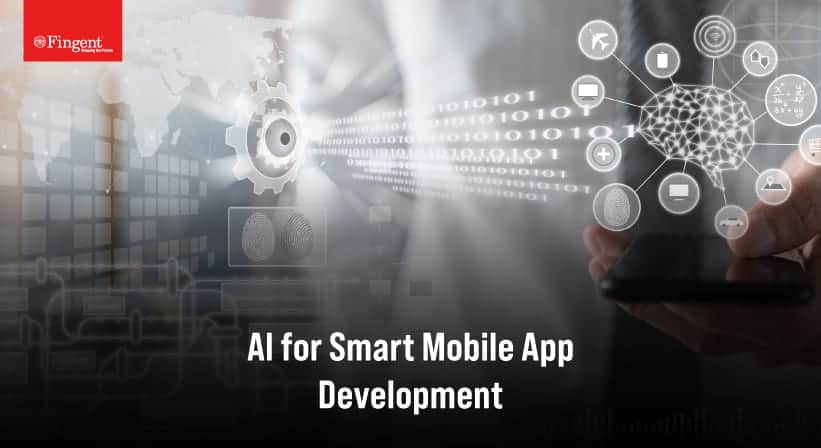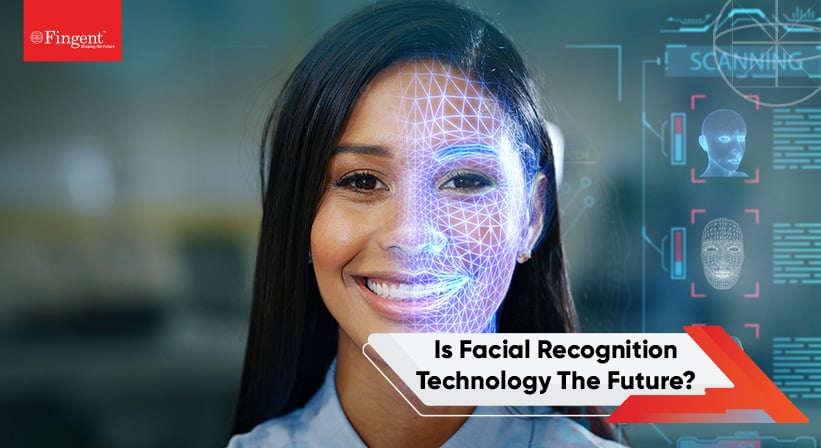How Biometric APIs Will Replace Passwords on Mobile Apps
Technology successively progresses all around us; from the simplest basic Google searches to the working of aircraft, technology has indented its value in everyday life. Biometric APIs are not a foreign idea to us, and 81% of all smartphones have biometrics enabled. Passkeys (on Apple) and Google’s new standards will enable a new class of security with protection like never before. This article will discuss the rise of this form of authentication and its benefits over traditional passwords.
Security – A Major Concern
A big chunk of our daily lives revolves around our mobile phones; sometimes, it is the key to our survival. Once technology grew and mobiles were planted in people’s hands, brands and organizations became smart and decided to adopt their services into these devices. Online banking and payment methods, personal detail locks, and private picture archives evolved. These are just a few generic examples of the important things we trust our mobile phones to hold. This being the case, is it not all the more important to ensure that this technological linchpin is protected at all costs?
Cybercriminals can hack into almost anything today – cars, security cameras, door locks, baby monitors, smart TVs, and even healthcare devices. Mobile devices can be extremely vulnerable to hostile software, viruses, data leakage, and other mobile threats without tight security measures. In such situations, one can not rely only on traditional password-based systems because they will crumble under a brute-force attack.
The Rise of Biometric Authentication
In very simple words, Biometric Authentication is essentially authentication that utilizes biometrics modalities (fingerprint, facial recognition, retina scanning, voice recognition, and more) to detect and authorize the identity of the user trying to access an electronic gadget. An individual’s biometric features are unique to only themselves, and authentication based on them is guaranteed to be effective.
Here are some advantages of biometric authentication over traditional passwords:
1. High security and assurance – Traditional passwords and security codes are generally harder to remember. The biometric system eradicates this problem by offering different modes of verification instead. Additionally, since fingerprints and iris scans cannot be forged, sensitive data will remain more protected.
2. Offers The Best ROI – The biometric authentication system is famous for its matchless ROI. It is a single device that keeps a check of every employee’s whereabouts in a large enterprise. The device is significantly better than a human resource representative who would claim a hefty salary to do the same job.
3. User Experience – Using this system is very convenient as it is built into most devices. This system is highly cost-effective and extremely fast in processing. In addition, forgetting a password is an infamous mistake of most users, but with biometrics, it’s impossible to forget them.
4. Prevents forging – Since everyone has their own set of biometrics, the forging of authorization is very slim. (Unless someone decides to pull a 007 move and trace fingerprints)
Current Adoptions and Usage
The Cisco Report of Trusted Access in 2022 stated that 81 percent of all smartphones have biometrics enabled. Mobile biometric authentication can be used in numerous industries, some of which include –
1. Mobile Banking – Banks use biometrics to authenticate transactions taking place through mobile banking. They also use biometric authentication to verify customers when they try to access their mobile banking app or bank accounts. Most popular banks now introduce the fingerprint and touch method for signing into their mobile banking app.
2. Retail Shopping – Online shoppers tend to abandon their shopping cart or any purchases when they can’t remember their passwords, but facial biometrics can resolve this problem for online shoppers by providing a simpler login experience. This can directly increase retail business. Mastercard has recently introduced its Identity Check Mobile, a mobile-based biometric authentication solution that allows customers to verify their identity by sending a selfie to the online retailer’s website.
3. Healthcare – Biometric information from fingerprints, iris scanning, and facial recognition are helping hospitals to identify patients and retrieve their past medical history. Northwell Health exemplifies this use case by using iris scanning and face recognition to identify emergency patients.
Read more: How Businesses Are Using Facial Recognition to Create An Impact!
Enabling Secure Authentication with Biometric APIs
API stands for Application Programming Interface and when used in conjunction with Biometrics, it refers to the Programming interfaces of websites and applications that are powered by biometric modules. Mentioned below are the three main types of biometric authentication:
- Fingerprint Authentication – It is the most common biometric authentication method and involves scanning a user’s fingerprint.
- Face Recognition Authentication – As the name suggests, this uses the mobile device’s front-facing camera to scan the user’s face. It is very simple to use and offers a high level of accuracy.
- Iris Scan Authentication – The user’s iris is scanned for authentication in this method. Iris scan authentication is the most secure biometric authentication method as it is extremely difficult to forge.
As Biometric Authentication provides such enhanced security, almost all mobile phone brands have adopted this feature to enhance the security they can provide, thereby building more concrete trust with their customers. For iOS-running mobiles, the availability of biometric options such as Face ID and Touch ID depends on the device. All Android 10 and newer devices have biometric authentication for face and fingerprint identification.
Three distinct areas highlight how biometric APIs will potentially replace passwords:
- Security – Since each individual has unique biometric modalities, it comes as no surprise that security in biometric APIs will be far better than traditional passwords.
- Convenience – The main reason that most people despise passwords is because they can be hard to remember. Further, remembering the login passwords for all of these can be tedious since most have multiple accounts on numerous platforms. Here the use of biometric API helps again because with these APIs the need for remembering a password does not exist.
- Future proof – Progress in AI, sensor technology, and IoT will ultimately enable seamless biometric authentication. When seen this way, biometrics stands out as catering to current and future demands, unlike traditional passwords.
Benefits Of Biometric APIs For Mobile Applications
Traditional password-based authentication presents multiple challenges, including password fatigue, poor user experience, and pressure on support and IT teams when passwords need to be reset.
Biometric APIs address these issues with the following benefits –
- Reduced password fatigue – Customers are not required to memorize all their passwords when matters lie in the hands of biometric APIs. An added advantage is the mitigation of password-related risks such as weak passwords and password reuse.
- Multi-factor authentication (MFA) – SaaS companies can now imbibe another wall of security by collaborating the power of biometrics with other methods.
- Improved customer satisfaction – it goes without doubt that all these advantages of biometric authentication will ultimately win the hearts of customers.
- Enhanced security – the concept of ‘no passwords’ renders cyber attackers helpless as they have a much harder time invading laptops and smartphones that are protected with biometric authentication.
Few Successful Implementations of Biometric Authentication
Biometric systems are great and immensely beneficial wherever identification and authentication are critical.
Let’s quickly look at the most typical use cases of biometric technologies today:
- Law enforcement and public security (criminal and suspect identification) through the work of forensic analysts.
- Military (enemy and ally identification) under the leadership of the DoD Automated Biometric Information System.
- Border, travel, and migration control (traveler, migrant, and passenger identification) in the form of electronic passports.
- Healthcare and subsidies (patient, beneficiary, and healthcare professional identification) are seen with national identity cards used in European and Middle Eastern countries.
Concerns And Considerations of Biometric Authentication
Like any developing technology, biometric authentication has its fair share of considerations. Discussed below are a few of those:
1. Privacy and Data Protection Considerations – challenges in privacy arise when one realizes that biometric APIs can use your information without warning you about it at the time of registration.
2. Ensuring Accuracy and Reliability of Biometric Authentication – these are seen when there is an evident bias in the training data and declining access due to erroneous scanning and compromise of the biometric, for instance, a cut finger.
3. Regulatory Compliance and Legal Implications – when intermingling emerging technologies with biometric APIs, unexplored legal territories are bound to emerge and transcend the domain of human health.
Future of Biometric Authentication
Biometric Authentication, from its dawn, has shown true potential for progress, and it continues to be adopted into various fields of life. A TMR study predicted that the biometrics market will efficiently boom to $136.18 billion by 2031. Listed below are some trends in biometric authentication that will paint the sky in the coming years:
- Verification of Physical Identity – Biometrics powered by AI using cameras installed on-premises.
- Use of Newer Identity Markers – Modalities such as odor recognition, heartbeat pattern recognition, DNA signature, and hand geometry are being developed.
- Identity Proofing – the use of ‘liveness’ testing to guard against identity theft. This can also be accomplished with the help of AI.
- Healthcare Applications – Biometrics will verify the patient’s entitlement to specific medical treatments and medications.
Biometric systems have the untapped potential to enhance cyber functioning with biometric authentication and identity management systems. The list of actual benefits of these APIs is miles long, and the right use of these applications can benefit the entire world. Countries across the globe are adopting Biometric Authentication and systems. Will you?
Connect with Fingent top software development company to learn more about how you can leverage technology to enhance your business operations and customer experiences.
Stay up to date on what's new

Recommended Posts

14 Jun 2023 B2B
How Artificial Intelligence Can Help Create Transforming Mobile Apps!
Today we live in a world where machines possess an extraordinary ability to learn, reason, and make decisions, much like the human mind. This remarkable realm of technology known as……

22 Nov 2022 B2B
React Native, Flutter, Ionic, Xamarin – A Comparison Between The Top Mobile App Development Frameworks
Frameworks are the backbone of mobile app development. They are essential to building dependable apps quickly. When choosing a framework, you can choose between native or cross-platform applications. Though both……

24 Oct 2022 B2B
Providing Seamless Customer Experience with Technology
Customer Experience – Two words that could make or break your business. Today, customers expect businesses to provide nothing short of an excellent customer experience whenever and however they shop.……
14 Jan 2022 B2B
Know What’s Driving Custom Software Development Cost This 2022!
Everyone uses software products. From toddlers to grandparents, in one way or the other, almost everyone has used a software product. The number of mobile devices operating worldwide stood at……
Featured Blogs
Stay up to date on
what's new














